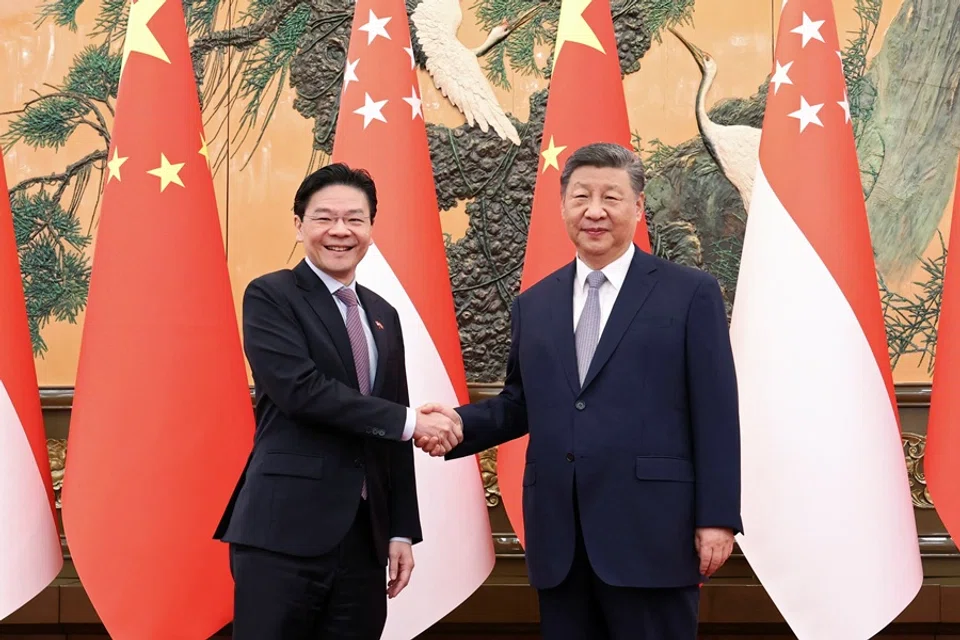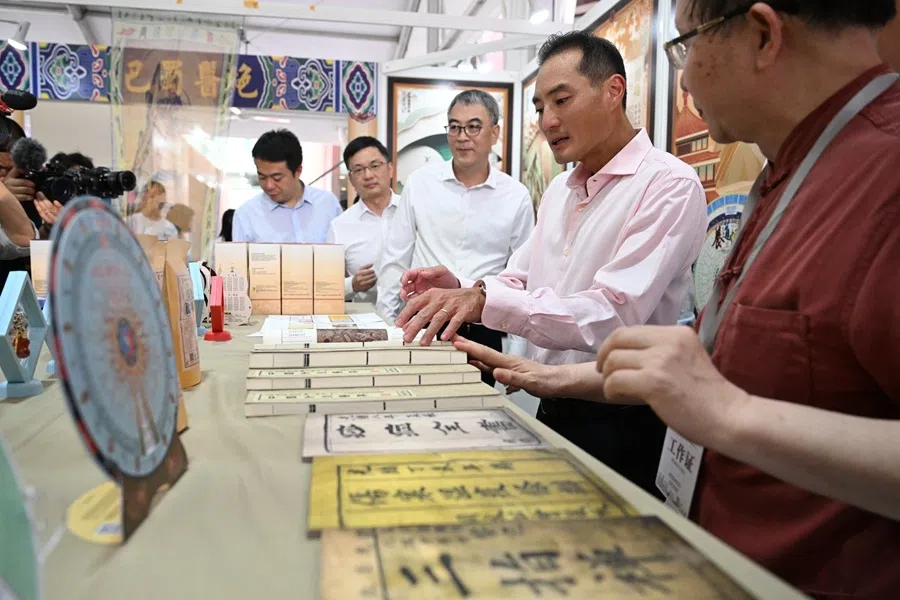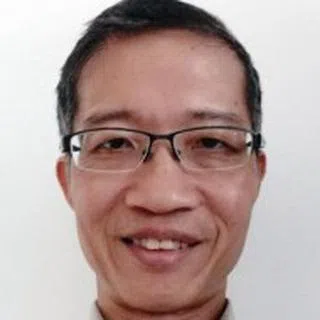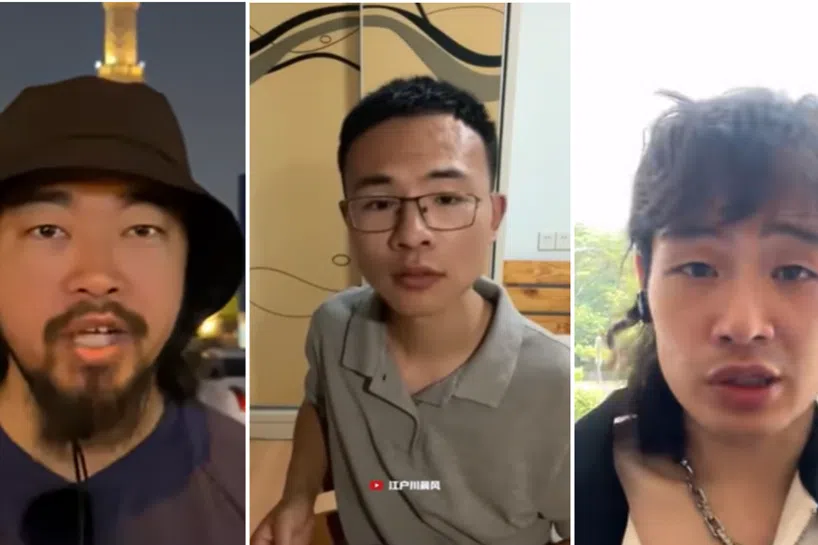Marking 35 years: Singapore’s grounded approach to China engagement
Singapore and China have committed to deepening their All-Round High-Quality Future-Oriented Partnership during Singapore Prime Minister Lawrence Wong’s visit to China. Although Beijing would like Singapore to sign on to its Community of Shared Future vision, it seems receptive to Singapore’s preference for pragmatic cooperation that produces tangible outcomes for the two countries. ISEAS researcher Lye Liang Fook explains.

A recent study finds that Southeast Asian countries, including Singapore, are leaning towards China based on certain objective criteria measured over time. However, a country may not necessarily be consciously tallying up its positions on a range of criteria as ultimately amounting to something. It could simply be guided by a hard-nosed assessment of its national interests or even certain principles that it values. Nowhere is this more apparent than in the case of Singapore, as exemplified by Prime Minister (PM) Lawrence Wong’s visit to Beijing and Tianjin in June 2025.
Regular high-level exchanges
PM Wong’s visit to China marks the 35th anniversary of diplomatic relations. It caps a number of high-level exchanges between the two countries over the past year. In 2024, Senior Minister and Coordinating Minister for National Security Teo Chee Hean, Deputy Prime Minister and Coordinating Minister for Economic Policies Heng Swee Keat and Senior Minister (SM) Lee Hsien Loong visited China in March, April and November respectively.
During his November 2024 visit, SM Lee travelled to Suzhou to participate in activities commemorating the 30th anniversary of the Suzhou Industrial Park, the first of three government-to-government projects between Singapore and China. He further met Chinese President Xi Jinping and chairman of the National Committee of the Chinese People’s Political Consultative Conference Wang Huning in Beijing. Deputy Prime Minister Heng Swee Keat visited China again in March 2025.
... the visit was interest driven rather than an attempt to align with China against the US.

From China’s side, Minister of the International Department of the Communist Party of China (CPC) Liu Jianchao, Defence Minister Dong Jun and Vice-Premier Ding Xuexiang visited Singapore in March, May-June, and November 2024. Ding Xuexiang came to Singapore to co-chair the 20th Joint Council for Bilateral Cooperation, the high-level body overseeing cooperation between the two countries. Ding also participated in a tree-planting ceremony at the Singapore Botanic Gardens to commemorate the 30th anniversary of the Suzhou Industrial Park before SM Lee’s departure to China in the same month. In 2025, Politburo member and Beijing’s party secretary Yin Li visited Singapore in February 2025.
PM Wong further chose China as the first non-ASEAN country to visit after receiving a strong mandate in Singapore’s general elections in May 2025. Chinese President Xi Jinping remarked that it showed the “great importance” Singapore attached to China-Singapore relations. While this is true, the main thrust of the visit was to enhance bilateral cooperation and for Singapore to work with China to uphold multilateralism and a rules-based international order in light of the disruption caused by Trump’s tariffs and policies. In other words, the visit was interest driven rather than an attempt to align with China against the US.
PM Wong’s visit objectives
PM Wong’s visit serves three main objectives. Firstly, it enables a new generation of Singapore leaders to build close rapport and trust with their Chinese counterparts which sets the tone for the overall relationship, continuing a tradition by Singapore’s founding father Lee Kuan Yew and Chinese leader Deng Xiaoping. PM Wong reiterated this longstanding practice when he met Chinese President Xi Jinping. In his meeting with Premier Li Qiang, PM Wong added that he had encouraged his cabinet members to make regular visits to China to build and strengthen close ties between the two countries.
This appears to be the first endeavour by Singapore and China to explore providing technical assistance to other countries, expanding a practice that Singapore has with countries such as Australia, France, Japan, the UK and the US.

Secondly, the visit is aimed at broadening and deepening ties in existing and new areas of cooperation. On the ongoing three government-to-government projects, for instance, PM Wong said that these were not one-off projects. They were being constantly upgraded and improved, and provided platforms for wider cooperation beyond their initial goals. In addition, four documents were signed during the visit, with three of them related to bilateral ties such as legal talent development, senior officials exchange programme and intellectual property data exchange.
The fourth document is a letter of intent to explore developing a Third Country Training Programme for ASEAN member states and Timor Leste (which will formally join ASEAN later this year) on sustainable development to enhance the region’s capacity to tackle common challenges like climate change. This training programme is based on the principle that countries who have fared better can extend human capacity building assistance to others who need it so as to achieve shared success and prosperity for all. This appears to be the first endeavour by Singapore and China to explore providing technical assistance to other countries, expanding a practice that Singapore has with countries such as Australia, France, Japan, the UK and the US.
Thirdly, the visit underscores the commitment of the two countries to work together, as well as with other like-minded countries, to uphold multilateralism and a rules-based international order. PM Wong stressed this in his meetings with Chinese President Xi Jinping and Premier Li Qiang.
Furthermore, in his remarks at the Summer Davos in Tianjin, PM Wong raised the concept of “flexible multilateralism”, where countries band together on issues of common interest to reinforce multilateralism and a rules-based international order, while at the same time leaving the door open for others to come on board when they are already to do so. This concept is a less loaded term and could be more readily accepted by the international community as opposed to “true multilateralism”, which suggests an exclusive group that practices a particular type of multilateralism against others that do not.
‘All-Round High-Quality Future-Oriented Partnership’ still relevant
Throughout PM Wong’s visit, the Chinese side made no mention of Singapore and China building a Community of Shared Future, which has been par for the course in Chinese leaders’ visits to Southeast Asia or in Southeast Asian leaders’ visits to China. There is also a Chinese view that more and more countries in Southeast Asia will profess their support for a Community of Shared Future or that there is a momentum to build an Asian Community of Shared Future. Singapore appears to have bucked this trend.
It could be that Singapore’s preference for pragmatic cooperation that produces mutually beneficial outcomes seems acceptable to China. The thrust of PM Wong’s visit was on deepening bilateral ties under the framework of the All-Round High-Quality Future-Oriented Partnership agreed by the two countries in 2023. PM Wong himself had stressed the relevance of such a partnership given how the two countries are proactively upgrading their cooperation based on existing projects in a number of areas and exploring new ones in fields such as digital economy, green economy and financial services.
... not officially subscribing to China’s Community of Shared Future does not mean that Singapore does not value its relationship with China. On the contrary, Singapore is actively contributing to China’s global initiatives...

More significantly, it seems that for a country to subscribe to China’s Community of Shared Future is tantamount to that country taking the side of China against other countries that are not part of its Community of Shared Future. Making such a choice would appear to run counter to China’s call on countries to exercise strategic autonomy or not to take a side at a time of intense rivalry between China and the US.
Moreover, not officially subscribing to China’s Community of Shared Future does not mean that Singapore does not value its relationship with China. On the contrary, Singapore is actively contributing to China’s global initiatives, particularly its Belt and Road Initiative.
Unlike other countries that rely on huge infrastructure investments from China, for instance, Singapore has a high-quality, forward-looking project in the form of the China-Singapore (Chongqing) Demonstration Initiative on Strategic Connectivity that seeks to build various forms of connectivity in finance, transport and logistics, aviation and Information and Communications Technology. In addition, such connectivity is not confined to China and Singapore alone but includes building linkages with other parts of Southeast Asia and the rest of the world so as to facilitate the flow of goods, capital, people and services.
Singapore-China relations are multifaceted, substantive and underpinned by practical outcomes that in turn provide the momentum for closer and deeper cooperation. Having a relationship that takes into account the interests of both countries, notwithstanding their differences in certain areas, provides a stronger and more lasting foundation for ties to grow and mature further.





